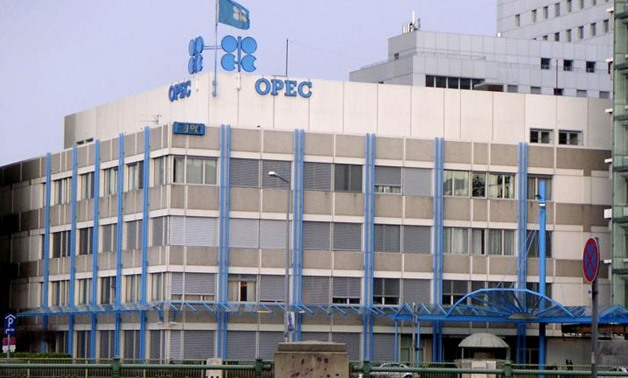
OPEC_headquarters
LONDON - 13 July 2017: OPEC's compliance with production cuts fell in June to its lowest levels in six months as several members pumped much more oil than allowed by their supply deal, thus delaying market rebalancing, the International Energy Agency said on Thursday.
OPEC's compliance with cuts slumped to 78 percent last month from 95 percent in May as higher-than-allowed output from Algeria, Ecuador, Gabon, Iraq, the UAE and Venezuela offset strong compliance from Saudi Arabia, Kuwait, Qatar and Angola.
"Each month something seems to come along to raise doubts about the pace of the rebalancing process. This month, there are two hitches: a dramatic recovery in oil production from Libya and Nigeria and a lower rate of compliance by OPEC with its own output agreement," the Paris-based IEA said.
The Organization of the Petroleum Exporting Countries and several non-OPEC producers including Russia have agreed to cut production by around 1.8 million barrels per day until March 2018 to ease a global crude glut spurred by booming U.S. output.
OPEC members Libya and Nigeria were exempted from the cuts due to years of unrest that have sapped their output. The two countries have managed to increase their combined production by more than 700,000 bpd in recent months, the IEA said.
"For fellow OPEC members, who agreed to reduce production by 1.2 million bpd, to see their cut effectively diluted by nearly two-thirds must be very frustrating, especially as their pact has, hitherto, been well observed by historical standards," the IEA said.
The cuts have stabilized oil at around $45-50 per barrel, but prices have come under renewed pressure in recent weeks due to growing U.S. output and little evidence of global stocks falling from record highs above 3 billion barrels.
The IEA, which advises industrialized nations on energy policy, said strong demand growth in the second half of 2017 and in 2018 should nevertheless speed up market rebalancing.
It said demand for OPEC's crude was forecast to rise steadily through 2017 and reach 33.6 million bpd in the fourth quarter - up 1 million bpd on OPEC's June output.
"Provided there is strong compliance with OPEC's cuts, that would imply a hefty stock draw, even if Libya and Nigeria recover further," it said.
The IEA said stocks in industrialized nations in May were 266 million barrels above the five-year average, down from 300 million barrels in April. Preliminary data shows a further moderate reduction in stocks for June.
The agency also said that while non-OPEC producers such as the United States, Canada and Brazil were firmly back in growth mode, the recent decline in oil prices could force some U.S. producers to reassess their prospects.
"Financial data suggests that while output might be gushing, profits are not and recent press reports quoted leading company executives saying that oil prices need to be around $50 per barrel to maintain production growth," the IEA said.

Comments
Leave a Comment